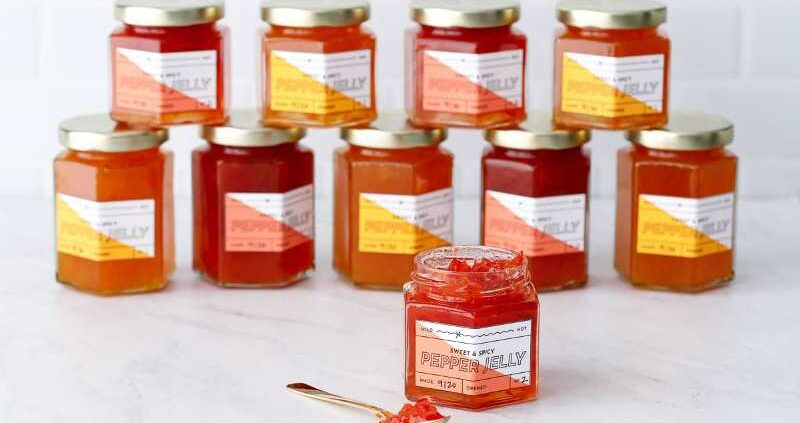Pepper jelly, a delightful combination of sweet and spicy, has become a staple condiment that tantalizes taste buds across the globe. But have you ever wondered about the intricate science behind the captivating flavor fusion in pepper jelly? In this article, we dive into the chemistry and culinary magic that make pepper jelly a unique and irresistible culinary delight.
Table of Contents
The Pepper Spectrum: Sweet to Spicy
Pepper jelly’s flavor complexity begins with the selection of peppers. From mild bell peppers to fiery habaneros, each variety contributes distinct levels of heat and flavor. This is primarily due to a compound called capsaicin, responsible for the peppers’ spiciness.
The Scoville Heat Scale measures capsaicin concentration, guiding pepper selection to achieve the desired balance between sweet and spicy. By combining various peppers, culinary artisans craft a symphony of flavors that dance on the palate.
The Role of Pectin in Texture
Ever wondered why pepper jelly has that uniquely smooth yet slightly chunky texture? Pectin, a natural carbohydrate found in fruits, is the secret behind its consistency. Through the process of cooking, pectin molecules in the fruit interact and form a network, giving pepper jelly its characteristic gel-like structure. This process requires the right balance of acidity, sugar, and heat. Mastering the science of pectin allows for a jelly that spreads effortlessly and offers a delightful mouthfeel.
Acidic Balance for Flavor Enhancement
The tangy note in pepper jelly owes its presence to acids, often in the form of vinegar or citrus juice. The science here is twofold: acidity not only heightens the overall flavor profile by enhancing sweetness and countering spiciness, but it also acts as a natural preservative, prolonging the shelf life of the jelly. The careful calibration of acidity is essential for achieving the ideal taste and texture combination that makes pepper jelly a culinary sensation.
Sugar Synergy and Culinary Alchemy
Sugar is more than just a sweetener in pepper jelly; it’s a fundamental component that harmonizes flavors and balances heat. Through the process of osmosis, sugar draws out the peppers’ natural juices, infusing the jelly with the essence of the pepper. This synergy between sugar and pepper creates a dynamic interplay of flavors, transforming a simple combination into a taste sensation that’s both complex and delightful.
Cooking Chemistry: Maillard Reaction
The cooking process is where the magic truly happens. As the jelly reaches high temperatures, a Maillard reaction occurs. This reaction, known for its role in browning and enhancing flavors in various foods, contributes to the depth of flavor in pepper jelly.
The interplay between sugars and amino acids in the peppers results in a medley of rich, complex flavors that elevate the taste experience to new heights.
Pepper jelly’s mesmerizing flavor fusion is more than a culinary accident—it’s a harmonious symphony orchestrated by the precise interplay of ingredients and cooking techniques. From the selection of peppers to the delicate balance of sweetness, spiciness, and acidity, each element is a piece of the intricate puzzle that makes pepper jelly a beloved condiment. So, the next time you savor a spoonful of this delectable treat, remember the fascinating science behind the culinary artistry that is pepper jelly.






